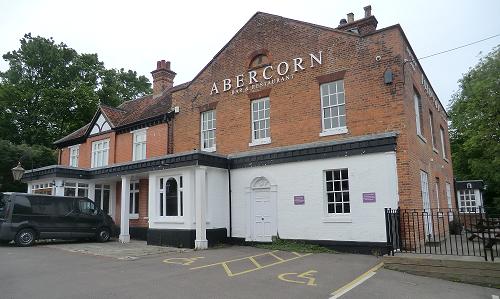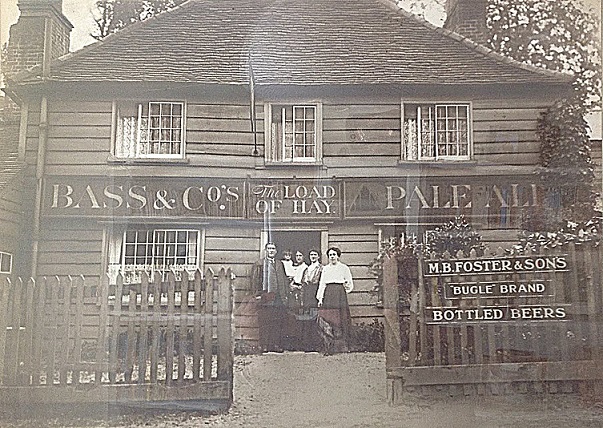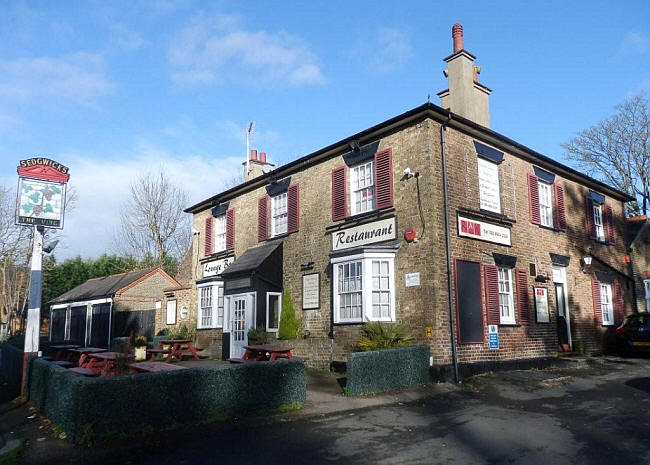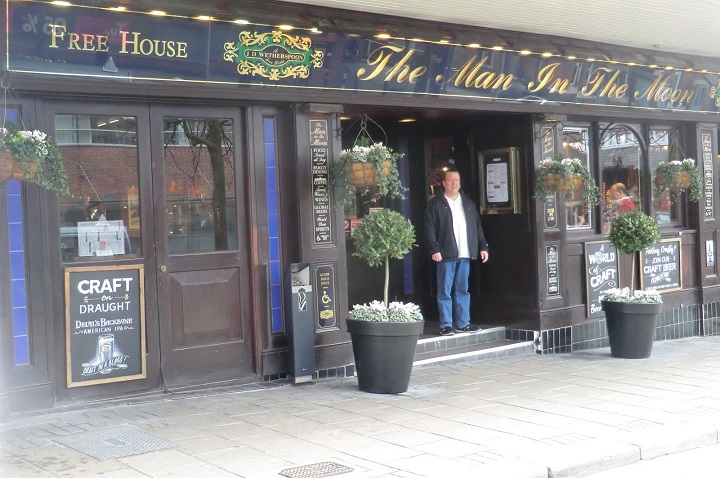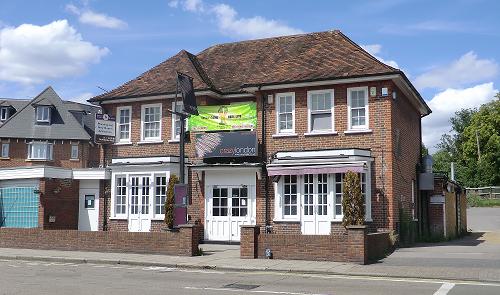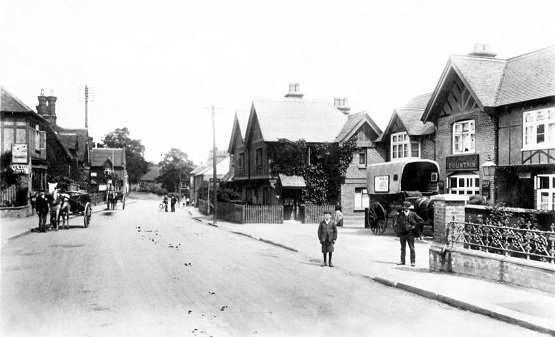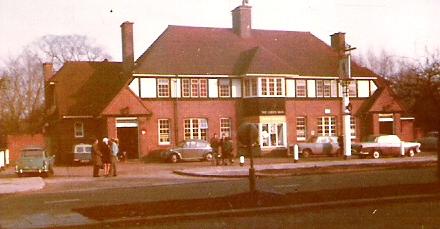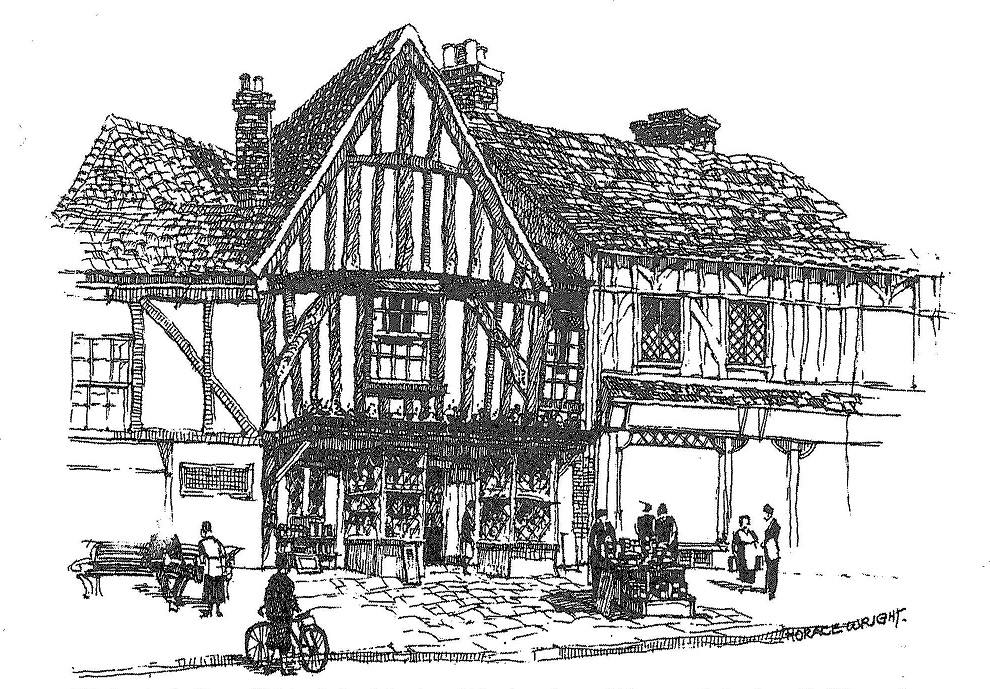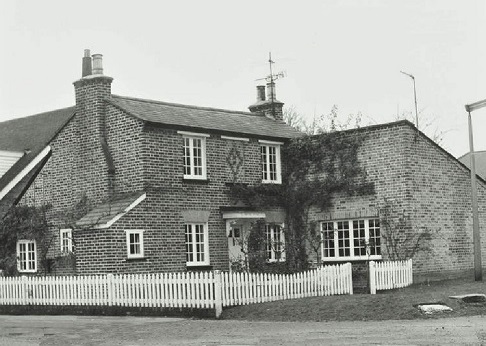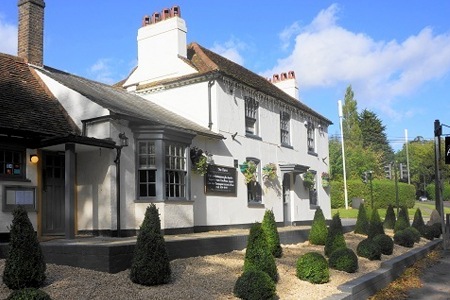The Lost Pubs of Stanmore
Since time immemorial the elevation of Stanmore has always made it a good place to stop for a drink and a bite to eat for weary travellers. One of the reasons is, that it sits upon a natural ridge and no matter which compass point you have travelled from, it 's almost always in an upward direction. The plateau at the peak being one of the highest parts of Middlesex standing at some 510 feet above sea level.
This ridge spans two main roads, one being the old coaching route known as the 'Kings highway ' which travelled from London up through Bushey and the Sparrows Herne Turnpike on its way to Tring. The other being the old Roman road known as Watling Street, which itself was built over an Ancient British track way, thought to date back to the stone age.
The ridge also formed a natural defensive barrier and became a vantage point for The Catuvellauni people who built their town along the edge of the ridge towards the Brockley Hill side, under what is now the grounds of the Stanmore Orthopaedic Hospital, this later became the site of the Roman town of Sulloniacae, famous for its pottery and a handy staging post between Londinium and St. Albans.
With the rise in coach travel during the 1700 's the local hotel and Inn trade flourished with a string of Alehouses up Stanmore Hill, some with their own stables including The Three Pigeons, The Queen 's Arms, The Abercorn Arms, The Black Horse, The Load of Hay, the Vine, The Red Lion, and The William the Forth on Little Common.
Sadly, now with changing demographics, cheap supermarket booze, the cigarette ban and the rise in home entertainment, the years have not been kind to the pub trade in Stanmore. Most of the local pubs have been converted to residential use, the ones that are still operating as business are now restaurants. When I first started this project, you could quite happily have a pub crawl through the town, now there are none left, so where did it all go so badly wrong for the pubs of Stanmore?
Despite a recent surge of craft beer, Stanmore like many towns and cities has fewer pubs now than it did 20 years ago. A pub was a landmark of the past - a point from where bearings could be taken, and directions given, but no longer.
If a time-traveller came from Victorian Stanmore and arrived a couple of decades ago, he would recognise many of the taverns around here. If he arrived today, he would be a very thirsty man.
The Abercorn Arms
Now trading as the Everest Abercorn
www.everestabercorn.com
78 Stanmore Hill, Stanmore, HA7 3BU
Telephone: 02031140041
The Abercorn Arms was named after the Marquess of Abercorn who acquired the nearby Bentley Priory Estate in 1788. It served many travellers on this busy route through Watford to the Midlands, encouraging further settlement on Stanmore Hill. Highwaymen apparently stalked this route since coaches moved slowly up the hill, given this was now a principal route to London. Coaches ran from outside the Abercorn Arms to Oxford Street twice a day as early as 1826 and between Stanmore and Holborn from 1803. The Abercorn is one of the few remaining hostilleries in the area to still have the stables and outbuildings, which were provided for traveller’s horses.
For a while the Abercorn was known as 'The Abercorn Arms Royal Hotel'. The hotel added the word ‘Royal’ to its name to proudly boast about one of Stanmore Villages many Royal connections. For it was in this pub on 20 April 1814 that Prince Regent later to be King George IV, the King of Prussia and other European dignitaries met with King Louis XVIII of France. Louis was returning in state to France to reclaim the throne after spending many years in exile in England, awaiting the defeat of Napoleon. Louis had a late breakfast at the hotel, he left the Abercorn at 15:00, travelling to London. The Morning Chronicle of 21st April 1814 describes a procession through the town in honour of the French King, who had to be helped down from his carriage as he was so infirm.
What an extraordinary spectacle it must have been to see one hundred gentlemen on horseback, the trumpeters in their gold lace, and the Royal Horse Guards flanking six royal carriages in a grand procession down Stanmore Hill.
The Load of Hay
217 Stanmore Hill
The Load of Hay, encompassed three cottages which originally stood on the site. The publican Samuel Charles Rathbone and his wife Eliza proudly stand at the entrance for this picture C1910.
This photo was kindly sent to us by Pauline Beer who was the great Granddaughter of the publican Mr. Rathbone
The Vine
154 Stanmore Hill, HA7 3DA
First licensed before 1751, this pub was bought by the Cluterbucks brewery in 1762 as a tied house and being just over the road from the Brewery was enjoyed by many of the brewers’ employees. In 1840 the pub was knocked down and rebuilt into its present form. By 1845 the Vine was a regular stopping place for the London bound coach service from Bushey.
In recent years The Vine was another pub that went down the restaurant route, but was unfortunately not that successfully and in 2015 applied for planning permission to convert the public house to private residential use.
The Queens Head
1 Stanmore Hill
First licensed before 1751. This pub was originally on the other side of the road but was moved during renovation of the village in the early 1900's. In 1865 the Queens Head was bought by the MP Robert Holland and was frequently used for vestry meetings, overseen by local landowners including William Hallett who owned Canons and Thomas Clutterbuck owner of the local Stanmore brewery, Clutterbucks.
J.D.Wetherspoons - The Man In The Moon
The Man in the Moon first opened its doors in 1993, in an old converted Iceland store. It was a large, busy, well used pub with plenty of photos and history of old Stanmore adorning the walls. The pub was situated in a handy location at the corner of Stanmore Hill and the Broadway, nestled into a shopping parade 'Buckingham Parade'. The Parade itself replaced the early-18th-century Buckingham House and Buckingham Cottage which was said to be the hunting lodge of the Duke of Chandos, but were both knocked down to make way for the parade in the 1960's.
This Wetherspoon was real late comer to the pub scene in Stanmore and also had the accolade of being the last pub to shut down. The man in the Moon closed its doors for the last time on February 28 2016.
The Crown.
43 Church Road Stanmore Middlesex HA7 4AA
The Crown Public house stood at the west end of Church Road, a conversion of the Crown Hotel first licensed in 1803 and was one of the villages many hotels. It was rebuilt in the 1930's during the road widening of Church road. After the property was sold by Ind Coope in 1989 the pub went through a succession of owners and changed its name frequently in recent years, trading as The Stanley More, Crazy horse, Crazy London and even a 'gourmet' burger bar.
One of the Crowns most famous clients was the cartoonist Heath Robinson, who on a Saturday afternoon liked to walk with his chums from Pinner to The Crown for a slap up lunch and a few pints. The latest owners of the premises now have planning permission to demolish the pub for a mix of retail and residential use.
The Fountain, Church Road
The Fountain, Church Road Stanmore, shown here in C1906 was only six years old, having just been rebuilt. The older original Fountain Inn is often shown in photos with the parish well in the forecourt. The fountain was demolished in 1969 (see top photo) to make way for a new development. The building that replaced it is still standing and is a mix of shops with residential flats above, aptly called 'Fountain House'.
The Green Man
730 Honeypot Lane, Stanmore.
Sitting on the edge of Stanmore Marsh, a beer-seller had been at this spot since at least 1851, and the Green Man was so named in 1865. Seen here beside Honeypot Lane, this road way was an ancient track way from London to the north dating back to at least Roman times. The name Honeypot lane comes from the fact that because the road is near the Stanmore Marsh, at certain times of the year the road was so boggy it was like walking through honey. The Green Man was knocked down and rebuilt about the same time the trackway was turned into a dual carriageway in the early 1930's. The pub was demolished in 2004 to make way for a block of flats named Amber House.
The Sawyers Arms public house
Now trading as a resturant
97 99, HIGH STREET, EDGWARE, HA8 7DB
Telephone: 020 8951 5554
A drawing of the Sawyers Arms public house in Little Stanmore in the 16th century. Miraculously this 400-year-old timber framed building has survived and is now trading as the Violet bar and grill. The building is dated from at least 1650, possibly earlier. This pen and ink drawing was done by local pharmacist Horace Wright. Horace is renowned for his historical drawings of old Edgware and Little Stanmore.
William the Fourth
Maytree Cottage, Little Common
Maytree Cottage, seen here in 1971, was built around 1800, and extended in 1855. It is built in brown brick with yellow brick gauged arches to openings. The property has an attractive porch and a slate roof with fishscale slates on the rear elevation. It was an alehouse in Victorian times called the King William IV, and in 1851 it is recorded, that the landlord was one Alfred Franklyn, a carpenter from Watford. Just outside of the cottage to the right of this photo there is a stone stepping block to aid thirsty traveller's to mount and dismount their horses.
The name William the Fourth has local connections as Williams widow, the Dowager Queen Adelaide was living at nearby Bentley Priory from 1847 to her death in 1849.
The Hare
hareoldredding.com
The Hare, Old Redding Harrow Weald HA3 6SD
Telephone: 0208 954 4949
Now, not exactly in Stanmore but just a few metres over the border, this pub does need a mention because it was originally leased by the Stanmore brewery.
A local man Thomas Clutterbuck, who owned the brewery 'Clutterbucks' on nearby Stanmore Hill, leased a cottage to convert into a Public House. First licenced in 1706, the pub was built from local bricks made at the nearby kiln.
For the workers locally employed in agriculture, or in the extensive brickworks owned by the Bodymeade family, the arrival of The Hare was a chance after their long labours to enjoy good ale and good company.
In the grounds of The Hare, near to the road there is a very rare Sarsen stone track marker, which is a sixty million year old silicified standstone, normally found in the Marlborough Hills. Sarsen stones were also used in the building of Stonehenge.
The Hare has seen many landlords over the years, too many to mention. However the Foskett family ran The Hare from 1841 to the turn of the century. In 1959 a former professional footballer George Hill, who played for Luton, took over the management from a Miss Ginn who had been landlady from 1914.
Today The Hare is part of the gastropub chain White Brasserie, which is owned by Celebrity chef Raymond Blanc.
The Seven Balls
Now trading as The Seven Harrow
749 KENTON LANE, HA3 6AW
Telephone: 020 8954 4744
The Legendary Seven Balls, again, not exactly in Stanmore but just over the border in neighboring Harrow Weald, this pub really does need a mention because for over 25 years this was my local.
The Seven Balls is a timber framed building and one of the oldest pubs in the area, dating from the 17th Century. It was first licensed in 1759, and is situated at 761 Kenton Lane opposite the junction with Gordon Avenue. Despite recent alterations to the interior, the external appearance has changed little over the years and still has its stable block facing the road, the building itself has grade II listed status.
You may be surprised to learn that before the first world war The Seven Balls was a terminus for the 58 bus, which ran a regular service to Charing Cross in London. The service was stopped after protests were made by the residents of Gordon Avenue, along which the buses began and ended their journeys.
As part of the 1993 refurbishment The Seven Balls ran a competition for a new swing sign. Won by a local resident with a design featuring seven decorative orbs. The previous sign had depicted a game of bowls. Although the inn's name is said to have been inspired by the coronet of the Duke of Chandos, allegedly decorated with seven balls.
Heineken-owned Star Pubs & Bars reopened the pub as an Indian resturant in 2019.

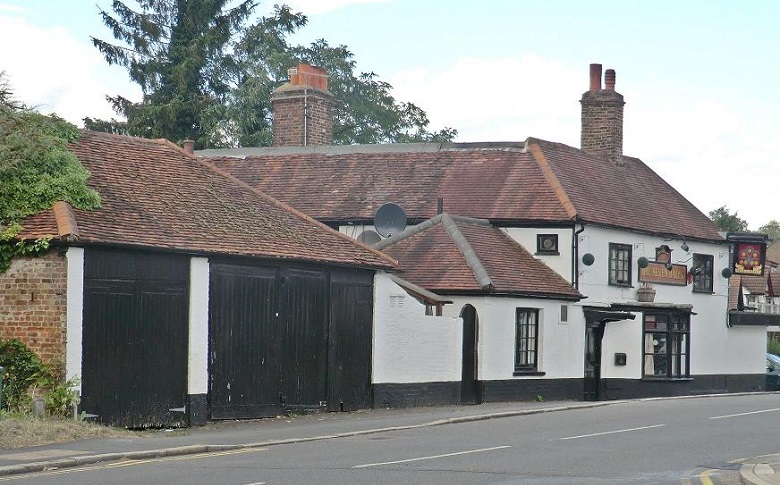
.jpg)

